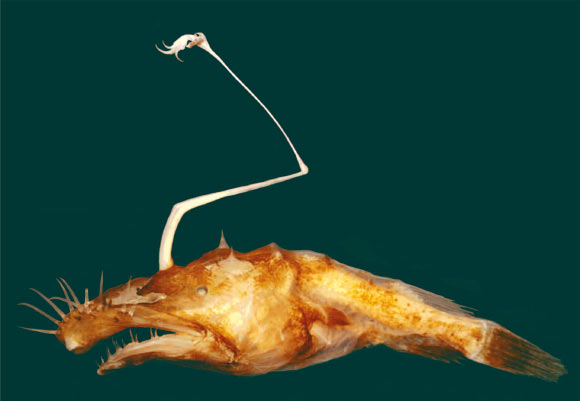A new species of the deep-sea anglerfish genus Lasiognathus has been described from the deep waters of the northern Gulf of Mexico.
Anglerfish are strange and elusive marine fish that are very rarely observed in their natural habitat. More than 200 species are distributed throughout the world’s oceans below a depth of 1,640 feet (500 m).
At the depths these fish live in, there is no sunlight. The only light is that from creatures that produce bioluminescence, which means they generate their own light source.
Also, at these depths, the pressure is immense – over one ton per square inch. And the fight for food is never-ending.
That’s why anglerfish have developed their unique way of attracting prey – the fleshy, bait-like appendage (esca) in front of their heads, which resembles a fishing pole of sorts.
The newly-discovered anglerfish species lives at depths ranging between 3,280 and 4,900 feet (1,000 and 1,500 m).
“Finding this new species reinforces the notion that our inventory of life in the vast ocean interior is far from complete,” said Dr Tracey Sutton of the Nova Southeastern University Oceanographic Center.
Dr Sutton and his colleague, Dr Theodore Pietsch from the University of Washington, proposed the scientific name Lasiognathus dinema for the new species.
“The name dinema, is derived from the Greek, di, a prefix meaning ‘two,’ and nema, ‘thread,’ in allusion to the two elongate, thread-like prolongations emerging anteriorly from the bases of the escal hooks of this species,” the scientists said.
The three females specimens of Lasiognathus dinema found ranged in size from 1.2 to 3.7 inches (3 to 9.5 cm) in length.
They were collected as part of an ongoing Natural Resource Damage Assessment Process conducted by the National Oceanic and Atmospheric Administration pursuant to the Deepwater Horizon Oil Spill.
“As a researcher, the one thing I know is that there’s so much more we can learn about our oceans. Every time we go out on a deep-sea research excursion there’s a good chance we’ll see something we’ve never seen before – the life at these depths is really amazing,” said Dr Sutton, who is the senior author of a paper published in the journal Copeia.
The specimens will reside in the Ichthyology Collection at the University of Washington, which is home to the world’s largest deep-sea anglerfish collection.
_____
Theodore W. Pietsch & Tracey T. Sutton. 2015. A New Species of the Ceratioid Anglerfish Genus Lasiognathus Regan (Lophiiformes: Oneirodidae) from the Northern Gulf of Mexico. Copeia 103 (2): 429 – 432; doi: 10.1643/CI-14-181








